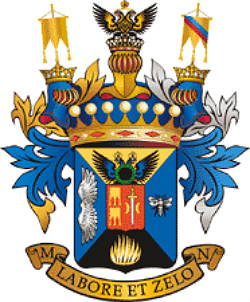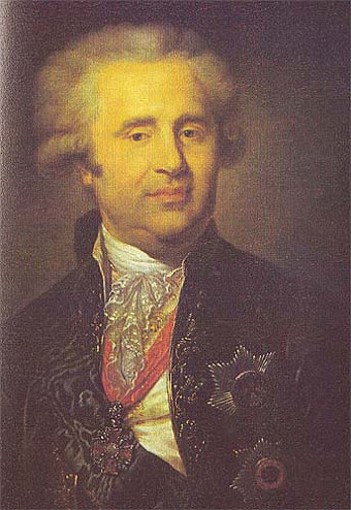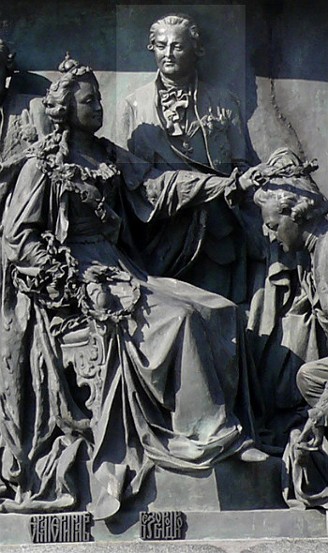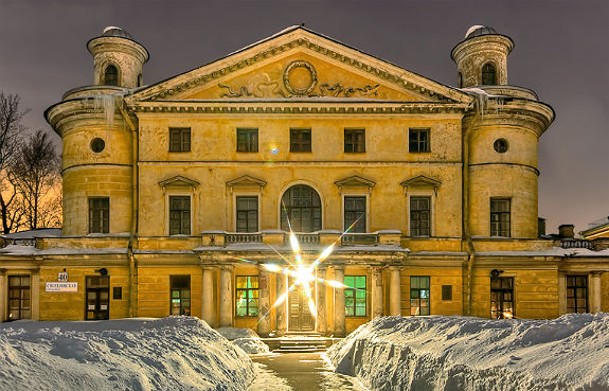Bezborodko, Oleksander
Bezborodko, Oleksander [Безбородько, Олександер; Bezborod'ko], b 14 March 1747 in Hlukhiv, Nizhyn regiment, Chernihiv region, d 6 April 1799 in Saint Petersburg. A leading figure in the Hetman state and later in the Russian Empire, a prominent diplomat, and a Russian prince from 1797; a member of the Bezborodko Cossack starshyna family and brother of Illia Bezborodko. Bezborodko studied at the Kyivan Mohyla Academy. He was a fellow of the standard from 1765 to 1772 and a member of the General Military Court in 1767–68, after which he was in the service of the Russian Empire. Serving as colonel of the Nizhyn regiment, he commanded several Cossack regiments during the Russo-Turkish War of 1768–74, and later became the colonel of Kyiv in 1774. He participated in the negotiations and signing of the Peace Treaty of Küçük Kaynarca. In 1775 he was enlisted as secretary of petitions to Catherine II. In 1780 he became a member of the College of Foreign Affairs and was promoted to postmaster general. In 1784 he became a member of the Russian Academy of Sciences. He received the title of the count for writing a manifesto on the annexation of the Crimea by the Russian Empire (1783) and for overseeing the successful implementation of its plan of action. In 1797 Bezborodko, who was by then planning and overseeing the Empire’s foreign relations, was made chancellor of the Russian Empire by Tsar Paul I.
Bezborodko initiated the annexation of the entire southern Ukraine and the Crimea from Turkey to Russia and was instrumental in the second and third partitions of the Polish-Lithuanian Commonwealth. The Treaty of Iaşi between Russia and Turkey (1792) was devised primarily by him. In 1796, under Paul I, Bezborodko succeeded in reinstating the General Military Court and several other institutions of the Hetman state that had been abolished under Catherine II. To assist him in the planning and realization of his far-reaching program, he assembled a group of talented and educated advisers from among his countrymen, and, not infrequently, from his own family (Petro Zavadovsky, Dmytro Troshchynsky, Mykhailo P. Myklashevsky, Hryhorii Myloradovych, and others). Bezborodko compiled a complete list of Ukrainian hetmans and a list of names of about 300 members of the highest governing bodies of the Hetman state. He was also the co-author with Vasyl H. Ruban of Kratkaia letopis' Malyia Rossii (A Short Chronicle of Little Russia, 1777) and, in the opinion of some scholars, of Istoriia Rusov. A 2-volume book about him, by N. Grigorovich, appeared in 1879–81.
BIBLIOGRAPHY
Grigorovich, N. Kantsler Kniaz' Aleksandr Andreevich Bezborodko v sviazi s sobitiiami ego vremeni: v 2 t., t.1 (Saint Petersburg 1879)
Tolbyn, V. ‘Graf I. A. Bezborodko’ in Gimnaziia vysshykh nauk y litsei knyazia Bezborodko (Saint Petersburg 1881)
Ukraïns'ka diaspora v Rosiis'kii Federatsii: istoryko-kul'turna spadshchyna (Kyiv 2011)
Oleksander Ohloblyn
[This article was updated in 2024.]


.jpg)
.jpg)

.jpg)
.jpg)
